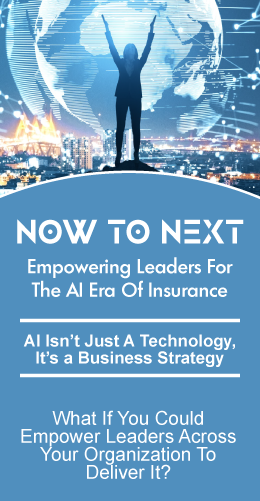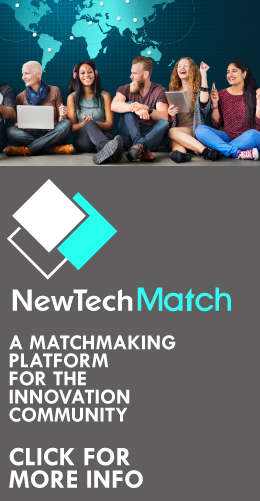Insurers must evolve or perish, as Gen Z & Alpha demand innovation. Explore “WealthHacks,” a hypothetical app revolutionizing wealth management. This story offers vital insights for executives seeking a competitive edge.
By leveraging design thinking, cutting-edge technologies, and a customer-centric approach, the WealthHacks example demonstrates valuable insights for executives seeking to transform their organizations and stay ahead of the curve in a competitive industry. You definitely want to share this with your team.
The WealthHacks App
LifePact, a fictional life insurance and voluntary benefits provider, set out to design a revolutionary App that would empower and educate the Gen Z and Alpha generations. They called it “WealthHacks.”
- A scalable platform that grows with users through various life stages, from learning basic money management concepts to retirement planning
- Gamification and behavioral science techniques to motivate and educate users
- Hyper-personalization, utilizing data from financial accounts, credit/debit card usage, and social media
- Easy access to online advisors, coaches, peer groups, and family support
- Integration with smart speakers, banking and investment accounts & kiosks
The Design Thinking Journey
The team embarked on a journey that took them through the five stages of design thinking: Empathize, Define, Ideate, Prototype, and Test. Here’s what they discovered along the way.
Empathize: The team began by conducting extensive research to understand their users, focusing on their lifestyle, values, and financial habits. They interviewed Gen Z and Alpha individuals, parents, teachers, and financial experts to gain insights into their financial knowledge, challenges, and aspirations. They also studied social media habits and financial account usage to comprehend their digital savviness and preferences.
Define: After gathering insights, the team identified their users’ core needs and pain points. They found that these generations sought flexibility, personalization, continuous learning, and easy access to financial tools and advice. They wanted a solution that would grow with them through various life stages, adapt to their evolving needs, and incorporate gamification and behavioral science to motivate and educate them.
Ideate: With a clear understanding of their user’s needs, the team brainstormed various ideas for the WealthHacks platform. They considered various engagement methods, such as mobile apps, web platforms, smart speaker integrations, and connections with banking accounts and kiosks. They also explored ways to provide value-added services, including online advisors, coaches, peer groups, and family support.
Prototype: The team developed a series of prototypes to test their ideas. They created mockups and interactive simulations for the WealthHacks platform, which included features like:
- Gamification elements for financial education and goal-setting
- Personalized financial recommendations based on user data
- Access to online advisors, coaches, and support networks
- Integration with banking accounts, credit/debit cards, and social media
- Permissions for sharing data with third parties and family members
- Scalability to accommodate users’ financial growth and changing needs through various life stages
Test: The team tested the prototypes with their target users, gathering feedback on usability, functionality, and overall satisfaction. They observed users interacting with the platform, asked questions about their experience, and identified areas for improvement. Based on user feedback, the team iterated on the prototypes, refining features and incorporating suggestions until they had a polished, minimally viable version of WealthHacks.
Definition: With the design thinking process complete, the team compiled their learnings into a detailed definition of the WealthHacks solution. The platform would offer a subscription-based business model, with additional revenue streams coming from a percentage of fees from third-party services and advisors.
General Capabilities include
Financial Health Score: Develop a proprietary scoring system that evaluates users’ overall financial health based on factors like savings, debt management, investment performance, and insurance coverage. Users could track their progress over time and receive personalized recommendations for improvement.
Behavioral Insights and Nudging: Leverage behavioral economics principles to identify users’ financial biases and habits and provide personalized nudges and prompts to help them make better financial decisions.
Voice Assistant Integration: Integrate with popular voice assistants like Amazon Alexa, Google Assistant, or Apple Siri to provide users with hands-free access to their financial information and enable voice-based queries and commands.
Multi-currency and Internationalization Support: If targeting users outside the United States or those with international financial interests, it’s essential to provide multi-currency support and tailor the app’s features and recommendations to different countries’ financial regulations and best practices.
Expense tracking and categorization: Implementing a more comprehensive expense tracking and categorization feature, including the ability to categorize transactions and set custom categories automatically, would give users greater insight into their spending habits and help them manage their budgets more effectively.
Integration with financial wellness programs: Partnering with employers or financial institutions that offer financial wellness programs can provide users with additional resources, education, and support, as well as potentially reach a larger audience for the app.
Multilingual support: Expanding the app to support multiple languages would make it accessible to a more diverse audience and cater to users from different linguistic backgrounds.
Financial education resources: Expanding the app’s library of financial education resources, including articles, videos, and webinars, can help users make informed decisions and stay up-to-date on the latest trends and best practices in personal finance.
Collaboration features: Allowing users to collaborate with their financial advisors, family members, or friends within the app can facilitate more effective financial planning and support. This could include shared budgets, joint goal setting, and secure communication channels.
Privacy and Customization Controls: Allow users to customize their privacy settings and control the amount and type of data they share with others.
Lifestage Design
The team decided that WealthHacks would be styled, personalized, and gamified to cater to the different life stages of the customer while anticipating the need to evolve as they progress through life.
Throughout each life stage, the WealthHacks app would anticipate the need to morph to the next stage by analyzing user data, such as age, financial milestones, and major life events. As the app detects an upcoming transition into a new stage, it would introduce and educate the user on the upcoming changes, seamlessly adapting its features, design, and gamification elements to suit the user’s evolving needs.
For example, when the app identifies a user’s graduation from college and the start of their first job, it sends notifications highlighting new financial goals and responsibilities, such as paying off student loans and saving for a home. The app would provide relevant resources, tutorials, and tips to help users understand and navigate these new challenges.
Similarly, when the app recognizes a user’s transition into marriage, it introduces features for managing joint finances, setting long-term goals, and planning for a family. The app would offer guidance on merging financial accounts, creating a shared budget, and navigating tax implications for married couples.
By proactively adapting to each life stage, the WealthHacks app would ensure that users receive personalized, contextually relevant, and age-appropriate financial guidance and support throughout their lives, empowering them to make informed decisions and achieve financial success.
Age 10 – Basic money management
The app would feature a simple, colorful, and engaging interface at this stage, focusing on basic financial concepts like saving, spending, and budgeting. Gamification elements, such as earning badges, leveling up, and completing quests, would be used to teach financial literacy in a fun and age-appropriate manner.
Value-added services:
- Interactive financial games and quizzes
- Virtual savings jars for different goals
- Parental guidance and monitoring features
- Allowance tracking and chore management
- Money management video lessons tailored for kids
Insurance:
- Children’s whole life insurance: Provides lifelong coverage with level premiums and cash value accumulation, ensuring financial protection for the child’s future.
- Accident insurance: Offers coverage for medical expenses and potential income loss due to accidents, providing additional protection for active children.
Gamification:
Users earn virtual currency for completing financial literacy quizzes and can use the currency to “purchase” customizations for their virtual savings jars.
High school – Part-time jobs, saving for a car and college:
As the user enters high school, the app would introduce more advanced financial concepts, such as goal-setting, saving for larger purchases, and earning income from part-time jobs. The app’s design would mature, incorporating elements that resonate with teenagers while retaining gamification aspects to maintain engagement.
Value-added services:
- Job search and resume-building tools
- Goal-setting and progress tracking for college savings
- Real-time spending analysis and budget alerts
- Financial literacy resources for teenagers
- Support for charitable giving and crowdfunding campaigns
Insurance:
- Same as coverages from Age 10
Gamification
Users compete in a leaderboard with friends to see who can save the most towards their college fund, unlocking badges and rewards along the way.
College – Student loans and budgeting:
The app would continue to evolve, adopting a more sophisticated design while addressing the unique financial challenges college students face. It would offer guidance on managing student loans, creating budgets, and maintaining financial health. Gamification would be adapted to encourage responsible financial behaviors, such as timely loan repayments and consistent savings habits.
Value-added services:
- Student loan management and repayment optimization
- Budgeting tools tailored for college students
- Scholarship and grant search resources
- Networking and mentorship opportunities
- Support for environmentally and socially responsible investing
- Integration with Tax Software: Partner with tax software providers
Insurance
- Renter’s insurance: Protects the student’s personal belongings in a rented apartment or dorm room, covering losses due to theft, fire, or other hazards.
- Health insurance: Ensures access to healthcare services while attending college, either through a parent’s plan, a student plan, or an individual plan.
Gamification:
Users can join a “savings challenge” where they compete against fellow students to cut expenses and save the most each month, with winners receiving exclusive discounts and perks.
Early career – First job, paying off loans, and saving for a home:
At this stage, the app would focus on helping users build a solid financial foundation, offering personalized advice on paying off loans, saving for a home, and making sound investment decisions. The design would become more professional, reflecting the user’s transition into the working world. Gamification elements, such as achievement milestones and rewards for meeting financial goals, would continue to encourage responsible money management.
Value-added services:
- Job interview preparation and career advancement resources
- First-time homebuyer guidance and mortgage comparison tools
- Personalized investment recommendations and portfolio tracking
- Networking and professional development opportunities
- Support for charitable giving and impact investing
Insurance:
- Term life insurance: Provides affordable, temporary coverage to protect financial dependents and cover outstanding debts, such as student loans or mortgages.
- Disability income insurance: Offers income protection in case of a disabling injury or illness, ensuring financial stability during recovery.
Gamification: Users earn points for making consistent progress towards paying off their loans or saving for a home, which can be redeemed for rewards or donated to a charity of their choice.
Marriage and family planning – Joint finances and long-term goals:
As users enter the marriage and family planning stage, the app would introduce features for managing joint finances, setting long-term goals, and navigating new financial responsibilities. The design would become more family-oriented, incorporating visuals and features that appeal to both partners. Gamification elements, such as shared goals and cooperative challenges, promote collaboration and healthy financial habits within the family.
Value-added services:
- Joint budgeting and expense-tracking tools
- Financial planning for family goals, such as education savings and vacations
- Estate planning and life insurance resources
- Tax optimization strategies for couples and families
- Support for socially responsible investing and charitable giving as a family
Insurance
- Life insurance (term or whole life): Ensures financial security for dependents and helps cover expenses like mortgage, education, and childcare in the event of the policyholder’s death.
- Critical illness insurance: Provides a lump-sum payment upon diagnosis of a covered critical illness, helping cover medical expenses, lost income, and other financial needs during treatment and recovery.
- Long-term care insurance covers the cost of long-term care services, such as in-home or nursing home care, providing financial protection as the policyholder or their family members age.
- Annuities: Provides a guaranteed income stream during retirement, helping ensure financial stability and security in later years.
- Long-term disability insurance: Continues to offer income protection in case of a disabling injury or illness, with coverage tailored to the policyholder’s changing needs and financial responsibilities.
Gamification:
Couples can create joint financial goals and complete “missions” together, earning badges and rewards that celebrate their achievements.
Retirement planning – Preparing for the future:
As users approach their retirement years, the app would shift its focus to retirement planning, investment strategies, and wealth preservation. The design would adopt a mature and refined aesthetic, reflecting the user’s accumulated financial experience and knowledge. Gamification elements, such as long-term goal tracking and rewards for achieving milestones, would be tailored to encourage prudent financial management and a comfortable retirement lifestyle.
Value-added services:
- Retirement income planning and investment strategy tools
- Long-term care and healthcare planning resources
- Travel planning and discounts for retirees
- Estate planning and legacy management guidance
- Opportunities to support charities and social causes in retirement
Insurance
- Health insurance: Ensures access to healthcare services, including supplemental Medicare plans for those approaching or reaching the eligible age.
Gamification:
Users can participate in a “Retirement Readiness” game, completing tasks and learning about retirement planning to unlock achievements and access exclusive retirement planning resources.
Retirement – Managing funds and enjoying life:
Managing funds and enjoying life: Upon entering retirement, the app would provide guidance on managing funds, making the most of their investments, and enjoying a financially secure retirement. The design would be clean and easy to navigate, emphasizing accessibility and usability for older users. Gamification elements would focus on maintaining financial stability, celebrating the user’s achievements, and promoting continued engagement with their financial well-being.
Value-added services:
- Pension and Social Security optimization tools
- Healthcare and Medicare resources for retirees
- Financial management services for elderly users
- Volunteer and philanthropy opportunities
- Senior discounts and perks from partner organizations
- Support for environmentally and socially responsible investing in retirement
Insurance
- Final expense insurance: Covers funeral and burial costs, relieving family members of the financial burden during a difficult time.
Gamification:
Users can participate in a “Retirement Bucket List” challenge, where they set and achieve personal goals or experiences they want to enjoy during their retirement, earning badges and rewards for each accomplishment. This could include philanthropic goals, such as volunteering hours or donations to a favorite cause, fostering a sense of purpose and fulfillment in retirement.
Technical Architecture
The technical architecture of the WealthHacks app would be built on a robust, modular, and scalable foundation, utilizing a combination of platforms and technologies to deliver a seamless and engaging user experience. Here’s a summary of the key components:
Cloud-based Infrastructure: The app would be hosted on a cloud platform like Amazon Web Services (AWS), Microsoft Azure, or Google Cloud Platform, which would provide the necessary scalability, flexibility, and security to handle user data and ensure optimal performance.
Microservices Architecture: The back-end of the app would be built using a microservices architecture, allowing for modular development, easy maintenance, and better scalability. Each feature, such as budgeting tools, investment recommendations, or gamification elements, would be developed as an independent, self-contained service communicating with others via APIs.
Cross-platform Development: The app would be developed using a cross-platform framework like React Native or Flutter to ensure compatibility with multiple devices and platforms (iOS, Android, and web). This approach would streamline development, reduce costs, and maintain consistent device user experiences.
Data Storage and Security: User data, such as financial information and preferences, would be stored securely in encrypted databases, with strict access controls and compliance with data protection regulations (e.g., GDPR, CCPA). Technologies like OAuth and token-based authentication would be employed to ensure secure user access.
Machine Learning and AI: The app would leverage AI and machine learning technologies, such as ChatGPT, to provide personalized financial advice, analyze spending patterns, and generate tailored recommendations. These technologies would continuously learn from user data, improving their accuracy and relevance.
APIs and Third-party Integrations: The app would utilize various APIs and third-party integrations to enhance its functionality and user experience. For example, it could connect to banking and financial institution APIs for secure access to account information, credit/debit card usage, and investment portfolios. Other integrations include connections to third-party financial advisors, coaches, and external tools or platforms for job search, scholarship search, and mortgage comparison.
Analytics and Reporting: The app would incorporate analytics tools like Google Analytics, Firebase, or custom-built solutions to track user engagement, app performance, and the effectiveness of its features. This data would be used to inform product improvements and drive data-driven decision-making.
Notification and Messaging Systems: To enhance user engagement, the app would implement notification and messaging systems, such as Firebase Cloud Messaging or Amazon Simple Notification Service, for sending targeted push notifications, alerts, and in-app messages to users based on their financial goals, milestones, and app usage patterns.
Gamification Engine: The app would include a custom-built or third-party gamification engine that manages the various gamification elements, such as points, badges, leaderboards, and challenges. This engine would be integrated with the app’s core features and user data to deliver a personalized, engaging, and motivating experience.
By leveraging a combination of these technologies, platforms, and architectural approaches, the WealthHacks app would be able to provide a secure, scalable, and personalized financial management solution that grows with users throughout their lives, helping them achieve their financial goals and adapt to their ever-changing needs.
WealthHacks app’s technical architecture and choice of technologies form a cohesive, powerful, and adaptable foundation that enables it to provide a comprehensive and engaging financial management solution for users of all ages and life stages.
What’s it take to build the App?
Initial Project Team
Here’s a rough breakdown of the team roles and size for a typical app development project:
- Product Manager – 1
- UX/UI Designer – 1-2
- Software Developers – 3-5 (depending on the app’s complexity and the need for front-end, back-end, and mobile developers)
- Content Strategist/Writer – 1-2
- Customer Support Specialist – 2-4 (depending on user base and support needs)
- Marketing Manager – 1-2
- Partnership Manager – 1-2
- Data Analyst/Data Scientist – 1-2
- Quality Assurance (QA) Engineer – 1-2
- Project Manager – 1
This would result in a team of approximately 12-23 members. Remember that this is a rough estimate and that the actual team and size could vary based on the project’s specific requirements, the skills and expertise of the team members, and the company’s resources and goals. Additionally, some roles could be combined or outsourced to freelancers or agencies.
Project Budget
Consider this a very rough estimate. The project budget uses high-end estimates for development, operational costs, and team salaries with benefits and overhead:
Development Costs (one-time):
- App design and development: $500,000
- Back-end infrastructure and API integrations: $300,000
- AI and machine learning development (e.g., ChatGPT integration): $150,000
- Gamification engine development: $100,000
- Quality assurance and testing: $50,000
- Project management and miscellaneous expenses: $60,000
Total Development Costs: $1,160,000
Operational Costs (annual, for a user base of 1 million):
- Cloud hosting and infrastructure: $300,000
- API usage fees and third-party service costs: $100,000
- App maintenance and updates: $100,000
- Customer support and community management: $200,000
- Marketing and user acquisition: $500,000
- Legal, administrative, and other operational expenses: $100,000
Total Operational Costs: $1,300,000
Team Salaries with Benefits and Overhead (for 9 months):
Total team costs for 9 months: $2,315,625
Integrated Project Budget:
- Total Development Costs: $1,160,000
- Total Operational Costs (first year): $1,300,000
- Team Salaries with Benefits and Overhead (for 9 months): $2,315,625
- Total Project Budget (for the first year, including development and 9 months of team salaries): $4,775,625
Using a Freemium Business Model- Here Are Potential Revenue Sources
The app would offer a basic set of features for free while generating revenue through multiple sources. Some possible revenue sources include:
Premium Subscriptions: Offer a premium version of the app with additional features, benefits, or services, such as advanced financial planning tools, personalized coaching, or priority customer support.
In-app Purchases: Provide users with the option to purchase add-ons or upgrades within the app, such as additional financial analysis tools, premium content, or access to exclusive webinars and courses.
Advertising: Display ads within the app or sponsored content from third-party companies. Ensure to keep the user experience in mind when implementing ads to avoid disrupting the app’s functionality or user satisfaction.
Affiliate Marketing: Partner with financial service providers, such as banks, credit card companies, investment platforms, and insurance companies. Earn a commission for each user that signs up for a partner’s service through the app.
Licensing and White-labeling: License the app’s technology to other companies, allowing them to integrate the app’s features into their own products. Alternatively, offer a white-label version of the app that other companies can rebrand and sell under their own name.
Data Monetization: With user consent, anonymize and aggregate user data to generate insights that can be sold to market research firms, financial institutions, or other interested parties. Ensure that user privacy and data security comply with relevant laws and regulations.
Premium Customer Support: Offer users the option to pay for expedited or enhanced customer support, such as 24/7 availability, dedicated support agents, or faster response times.
B2B Solutions: Develop solutions and tools specifically designed for businesses, such as financial planning and analysis tools or employee financial wellness programs, and charge a subscription fee for access.
Donations and Crowdfunding: Offer users the ability to donate directly to the app’s development and maintenance or create crowdfunding campaigns to fund specific features, improvements, or expansions.
Workshops and Events: Host paid workshops, seminars, or other events related to financial planning, investment strategies, and personal finance topics. These events could be in-person or virtual and could be a source of additional revenue.
Get Your Team’s Wheels Turning – Share This Article
Technology and customer demands will bring about a new generation of customer engagement and a hyper-integrated approach to helping customers manage their financial wellness. The WealthHacks example highlights the power of design thinking, advanced technologies, and innovative approaches that will shape the future of life and voluntary benefits insurance by addressing the unique needs of the digitally savvy Gen Z and Alpha generations.
By sharing this article, you can inspire and motivate your teams to reimagine traditional business models and products and embrace the insurance industry’s future. In doing so, you can secure your position as a market leader and drive long-term success in an increasingly digital and customer-centric world.
Let’s get started.
Mike Connor, CEO, SVIA
Your thoughts and comments are appreciated.








